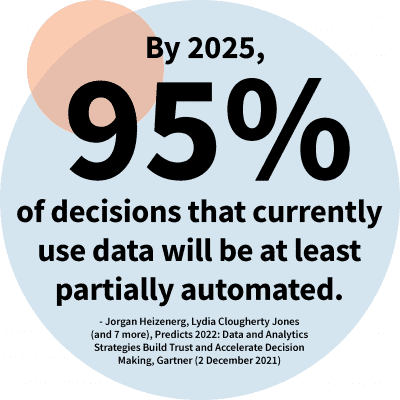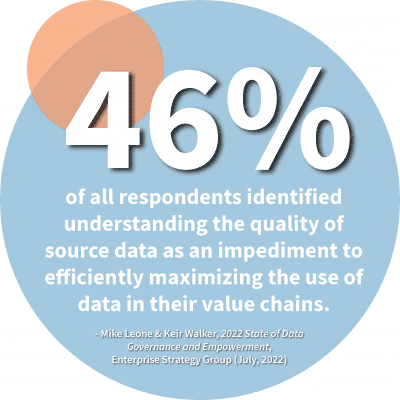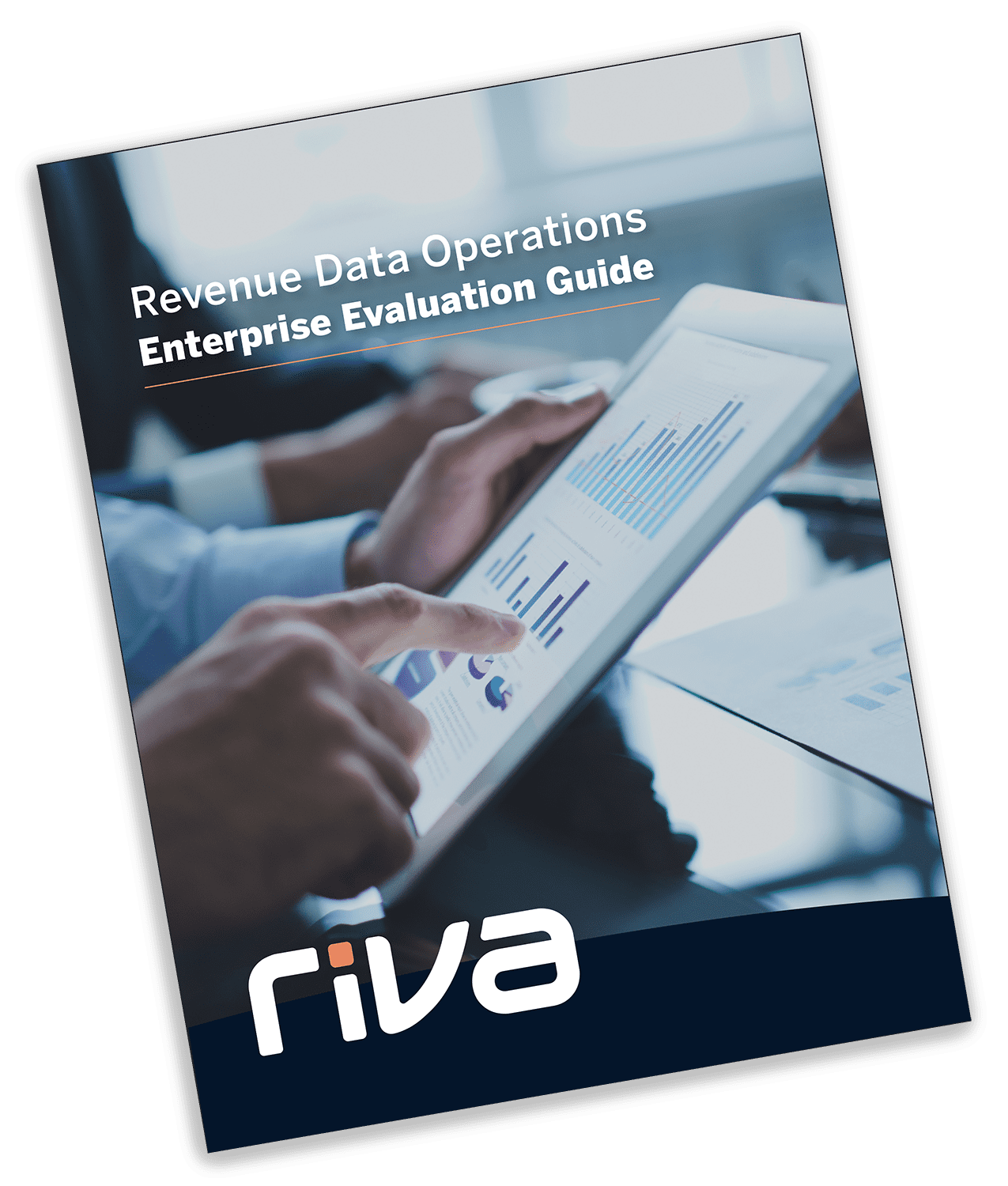Native CRM Connectors Can Compromise Data Trust, Compliance, and Productivity
We’ve all been caught in the vice of choosing between a low-feature, low-cost option and an alternative that promises the features and benefits you’d love—but at an up-front cost, you don’t. At one point or another, you probably listened to your wallet and opted not to shell out the extra dollars, hoping you’d adjust to the compromise. And if you’re like most of us, you came to regret the decision when your long-term needs won out—and you spent a lot more to attain your goals in the first place.
The allure of up-front savings is hard to resist. Take CRM, for example. As a thought leader or decision-maker tasked with assessing the needs of—and solutions for—your enterprise, you’ve likely been sold on the notion that the CRM you chose is the panacea designed to deliver a complete Customer 360 with little to no effort. As the story goes, CRMs like Salesforce will provide everything you need to gather, store, access, and analyze customer and revenue data.
While that is a good story, the unfortunate truth is that a stand-alone CRM is only one part of an increasingly sophisticated revenue technology stack.
Without the help of a complementary revenue data operations solution, CRM can’t effectively connect email, calendars, and the other communication platforms your end-users rely on (think Slack, Teams, Zoom, etc.). Without reliable data synchronization, it is difficult to provide the critical unified data that comes from engaging with customers and coworkers across your communications stack and your revenue stack.

Under that lens, the low up-front cost of the native CRM connector doesn’t seem like much of a bargain after all.
“When an enterprise implements a CRM platform, they may not appreciate the important and specialized role data operations plays in attaining its value,” says Stéphane Zanoni, Chief Technology Officer at Riva, a leading enterprise data operations solution provider.
“In some cases, they take the path of least resistance and opt for the CRM-native data connector. In other cases, they might choose to build their own integration or to go without data operations altogether. With these options, companies quickly learn that their business requirements call for a deeper understanding of how critical revenue and relationship data moves — between customer-facing applications and revenue operations and analytics applications.”
The choice to implement a “cheaper” approach of using a native CRM connector—or relying on end users to enter data from one system to another—creates a myriad of hidden carrying costs that grow over time. Those costs hit enterprise bottom lines hard, hindering data trust, compliance, productivity, revenue growth, and user and customer confidence.
7 ways the hidden carrying costs of native CRM connectors play out
1. Data governance capabilities are limited
CRM systems are powerful. But CRMs like Salesforce aren’t designed to connect to the growing number of communications platforms end users rely on to communicate, schedule, and gather critical revenue data during their interactions with coworkers and customers. To address that shortcoming and offer assurance to enterprise customers, most CRMs offer native connectors – like Einstein Activity Capture (EAC).
Unfortunately, these solutions provide limited or no data governance capabilities. As a result, they work as data dragnets that grab and share data without curation. The result is often the delivery of data that’s unfiltered, unreliable, and in many cases, inappropriate for sharing because it’s personal, of poor quality, or in violation of industry-specific regulations.
The carrying costs of ungoverned oversharing are difficult to overstate. They hit at every level of the trust/productivity/compliance spectrum by diminishing end-user and customer confidence, increasing the time and effort necessary for stakeholders to manually gather and enter relevant data, and increasing the risk of costly, reputation-damaging compliance violations.
2. End-users don’t trust enterprise data because it’s incomplete and inaccurate
When enterprise stakeholders have access to a single source of carefully governed, curated, and complete data, they recognize its value. They learn they can rely on it and are far more likely to embrace their role in a data-driven enterprise. However, in a classic case of “Broken Window Theory,” when they lose trust in the data, it affects their attitude toward the CRM environment, leading to more problems.
Unfortunately, CRM-native data ops connectors are blunt instruments designed for data storage, not for data usage and analytics. End-users are often frustrated by the need to re-enter information to preserve data completeness or when data does not appear in essential reports that are supposed to drive planning and acceleration activities.
In enterprises without adequate data governance data quality and completeness shortcomings are nearly impossible to police. As a result, data quality drops, and end users learn that enterprise data is untrustworthy. When data trust drops, the power and value of enterprise data diminish exponentially—and end-users are left with little more than workarounds and gut instincts about their interactions with customers. In short, a CRM with broken windows scuttles digital transformation and its bottom line advantages.
Related reading: From Skeptics to Superusers: Turning the Tide on Low CRM Adoption
3. End-users who don’t trust enterprise data won’t contribute to CRM’s value
The heart of any CRM’s value is its deep integration into the end-user’s workflow. It’s a simple, brutal reality: no matter how much your enterprise spends on CRM, users will only use it if it is easy AND if they see—and trust—its value to the task at hand. And since end users communicate with customers via email, calendar, and communications platforms other than CRM, the connection between the revenue stack and the communications stack is critical.
Native connectors are not designed to support the complicated reality of end-user workflows making manual entry a painful reality. But for users who don’t trust the data available on CRM, manually re-entering the revenue and customer data they gather on their preferred platforms is a non-starter.

Friction in end-user workflow means the ROI on your CRM is at risk—and any solution that doesn’t enhance data trust and compliance will continue to make things worse. Ultimately, customer experience suffers, and revenue opportunities are lost without faith in CRM data.
4. Enterprise stakeholders rely on poor-quality data to inform reporting, customer interactions, product development, and projections
Because CRM-native connectors are deficient in delivering the communications stack data necessary to deliver a reliable Customer360, reporting, analytics, and the decisions they inform are often based on inaccurate or incomplete information.
This negative impact tends to multiply over time. Consider a navigation error, where a sailor’s compass is off by one degree. While that margin of error might be adequate to reach a nearby port, its impact at the end of an ocean-crossing journey could have catastrophic consequences. The same is true in an enterprise setting: relying consistently on inaccurate or incomplete data for months or years will likely create results that fall well short of customer and company objectives.
5. Regulatory compliance risks grow
The all-or-nothing data sharing design of native connectors means they either deliver unfiltered data to end-users—or no data at all. In regulated industries, misdirected or misused data isn’t simply an inconvenience: it’s a recipe for costly, reputation-damaging compliance violations.
Configurability is at the heart of a trustworthy revenue data operations platform. The data governance capabilities delivered by this type of solution offer a significant advantage over simple connectors. In nearly every case, the purpose of a CRM-native connector is to simply and reliably get data into storage. For most enterprises in regulated industries, one size is not the right fit for all. More sophisticated revenue data ops solutions offer levels of configurability that ensure the tailored governance (human and automated) required to curate revenue data before it reaches end-users. As a result, sensitive data is available only to those authorized to see and use it—significantly reducing the risk that it will be inadvertently overshared or misused in ways that might trigger compliance violations.
Related reading: MNPI Compliance & Regulation in U.S. and EU Markets
6. Stakeholder productivity suffers
There’s a demonstrated cognitive load associated with task switching and application toggling. Unfortunately, this kind of friction is common in enterprise environments where stakeholders use CRM, email, calendar, and other communications platforms throughout the course of the workday.
Friction, of course, slows things down—including worker productivity. In theory, connectors were designed to reduce that friction by gathering data from end-users and forming a single point of contact and a single source of truth. But the reality of customer data is that it is just not that simple.Without features that properly transfer end-user-entered data between and among platforms, data re-entry is still necessary—lowering adoption and increasing the risk of errors and omissions.

At scale, this friction results in real dollars lost to the organization – not just in time wasted on tasks that could be automated or made simpler but also in the opportunity cost of time spent away from customers.
Unfortunately, as discussed above, end-user data-entry frustrations fuel the data and CRM distrust cycle. Because they lack confidence in the data they and their peers are entering, they lose faith in the data’s quality. Lower quality amplifies lower trust in CRM data. Lower trust hinders accurate calendaring and reporting—and productivity takes another hit as end-users miss critical meetings, rely on workarounds, and endure customer engagements without accurate histories, all of which brings us to number seven below.
7. Customers lose confidence in your organization
Everything the enterprise does—or doesn’t do—affects customers. Everything. So when a company takes the path of least resistance (and presumably lowest up-front cost) and implements a simple connector when that does not suit its requirements, customers will feel its impact. Here’s why:
- Customer-facing teams won’t have access to complete, accurate customer journey data.
We said it before, but we’ll repeat it: if the data connector doesn’t streamline data capture, curation, and sharing, data trust (and quality) will suffer. The net impact of that cycle is that end-users won’t have access to current, accurate customer history data when interacting with customers. Answers to even simple questions (Is this an existing customer? What have they purchased from us? When were they last engaged?) will remain a mystery. Customers will be frustrated when they must retell their stories from beginning to end.
- Without accurate and trustable data, reporting can’t provide accurate and actionable information on employee activity or its impact on customer relationships.
With accurate reporting, enterprise managers and CRM end users gain a clear picture of where prospects stand in the customer lifecycle. On a macro level, this allows managers to understand the big picture of which customers are active or lapsed; which customers have bought recently or postponed purchasing; and whether prospects represent cold, warm, or hot leads. Critical customer opportunities are lost—and customer relationships suffer without accurate reporting, informed by trusted and well-governed data.
Summing up
Like everything, CRM-native connectors have their place. For some organizations—think startups and small-to-mid-sized companies operating in unregulated industries—access to basic data integration functions may justify the up-front savings. But for organizations in regulated enterprises and those anticipating the need to scale, a mature, sophisticated, automated, and scalable revenue data ops platform easily justifies the long-term investment.
The investment of time upfront understanding the art of the possible – in terms of improved data trust, reliable compliance, improved productivity, and a CRM environment without broken windows – will translate directly into higher ROI, greater employee and customer satisfaction, and ultimately higher lifetime value.

